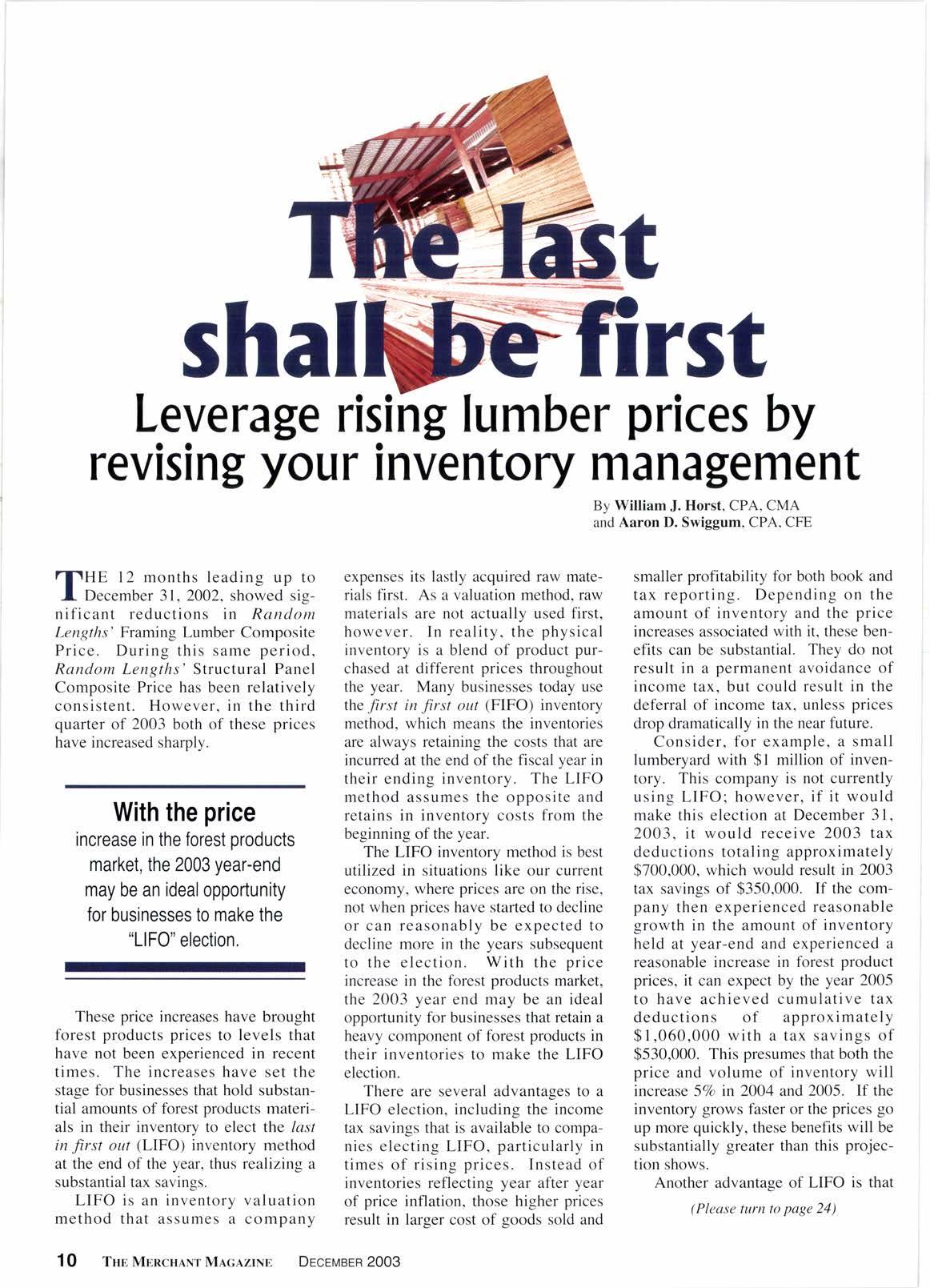
2 minute read
shal rst
Leverage rising lumber prices by oo revising your inventory management
By William J. Horst, CPA, CMA and Aaron D. Swiggum, CPA, CFE
THE l2 months leadin_e up to I December 3l. 2002. showed significant reductions in Random Lengths' Framing Lumber Composite Price. During this same period, Random Lengths' Structural Panel Composite Price has been relatively consistent. However. in the third quarter of 2003 both of these prices have increased sharply.
With the price
increase in the forest products market, the 2003 year-end may be an ideal opportunity for businesses to make the "LlF0" election
These price increases have brought forest products prices to levels that have not been experienced in recent times. The increases have set the stage for businesses that hold substantial amounts of forest products materials in their inventory to elect the last in first out (LIFO) inventory method at the end of the year, thus realizing a substantial tax savings.
LIFO is an inventory valuation method that assumes a company expenses its lastly acquired raw materials first. As a valuation method. raw materials are not actually used first, however. In reality, the physical inventory is a blend of product purchased at different prices throughout the year. Many businesses today use the fir.st in first oal (FIFO) inventory method, which means the inventories are always retaining the costs that are incurred at the end of the fiscal year in their ending inventory. The LIFO method assumes the opposite and retains in inventory costs from the beginning of the year.
The LIFO inventory method is best utilized in situations like our current economy, where prices are on the rise, not when prices have started to decline or can reasonably be expected to decline more in the years subsequent to the election. With the price increase in the forest products market, the 2003 year end may be an ideal opportunity for businesses that retain a heavy component of forest products in their inventories to make the LIFO election.
There are several advantages to a LIFO election, including the income tax savings that is available to companies electing LIFO, particularly in times of rising prices. Instead of inventories reflecting year after year of price inflation, those higher prices result in larger cost of goods sold and smaller profitability for both book and tax reporting. Depending on the amount of inventory and the price increases associated with it, these benefits can be substantial. They do not result in a permanent avoidance of income tax, but could result in the deferral of income tax, unless prices drop dramatically in the near future.
Consider, for example, a small lumberyard with $l million of inventory. This company is not currently using LIFO; however, if it would make this election at December 31, 2003. it would receive 2003 tax deductions totaling approximately $700,000, which would result in 2003 tax savings of $350,000. If the company then experienced reasonable growth in the amount of inventory held at year-end and experienced a reasonable increase in forest product prices, it can expect by the year 2005 to have achieved cumulative tax deductions of approximately $1,060,000 with a tax savings of $530,000. This presumes that both the price and volume of inventory will increase 57o in 2004 and 2005. If the inventory grows faster or the prices go up more quickly, these benefits will be substantially greater than this projection shows.
Another advantage of LIFO is that (Please turn to page 24)










